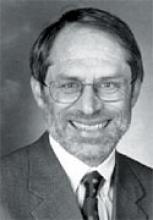User login
Joe was like many of my patients: middle-aged, overweight, suffering from type 2 diabetes and COPD. For many years I suggested he stop smoking, to no avail. Then, one day, out of the blue—he quit. Seems he reached 50, saw his father crippled by emphysema, and with the price of gasoline and a pack of cigarettes rivaling each other, decided he had enough. I congratulated him and offered further assistance while marveling about the mysteries of human behavior. Now I have a vocabulary for such phenomena: nonlinear dynamics.
I guess I always knew my practice was ruled by chaos and complexity. I just didn’t know how to capitalize on this phenomenon. Dr David Katerndahl—with all due respect to Sir Isaac Newton—helps translate the latest thinking about nonlinearity in medicine and offers suggestions on how to incorporate these phenomena in patient care.
Whether faced with the resistant patient with diabetes mellitus, the critically ill individual in the ICU, or the person like Joe who has an epiphany, this new look at the world adds another set of tools to our black bag. Maybe Newton could learn to be a good family doc after all.
Joe was like many of my patients: middle-aged, overweight, suffering from type 2 diabetes and COPD. For many years I suggested he stop smoking, to no avail. Then, one day, out of the blue—he quit. Seems he reached 50, saw his father crippled by emphysema, and with the price of gasoline and a pack of cigarettes rivaling each other, decided he had enough. I congratulated him and offered further assistance while marveling about the mysteries of human behavior. Now I have a vocabulary for such phenomena: nonlinear dynamics.
I guess I always knew my practice was ruled by chaos and complexity. I just didn’t know how to capitalize on this phenomenon. Dr David Katerndahl—with all due respect to Sir Isaac Newton—helps translate the latest thinking about nonlinearity in medicine and offers suggestions on how to incorporate these phenomena in patient care.
Whether faced with the resistant patient with diabetes mellitus, the critically ill individual in the ICU, or the person like Joe who has an epiphany, this new look at the world adds another set of tools to our black bag. Maybe Newton could learn to be a good family doc after all.
Joe was like many of my patients: middle-aged, overweight, suffering from type 2 diabetes and COPD. For many years I suggested he stop smoking, to no avail. Then, one day, out of the blue—he quit. Seems he reached 50, saw his father crippled by emphysema, and with the price of gasoline and a pack of cigarettes rivaling each other, decided he had enough. I congratulated him and offered further assistance while marveling about the mysteries of human behavior. Now I have a vocabulary for such phenomena: nonlinear dynamics.
I guess I always knew my practice was ruled by chaos and complexity. I just didn’t know how to capitalize on this phenomenon. Dr David Katerndahl—with all due respect to Sir Isaac Newton—helps translate the latest thinking about nonlinearity in medicine and offers suggestions on how to incorporate these phenomena in patient care.
Whether faced with the resistant patient with diabetes mellitus, the critically ill individual in the ICU, or the person like Joe who has an epiphany, this new look at the world adds another set of tools to our black bag. Maybe Newton could learn to be a good family doc after all.
